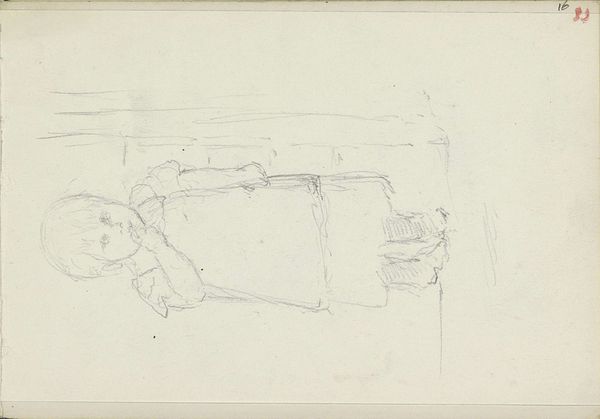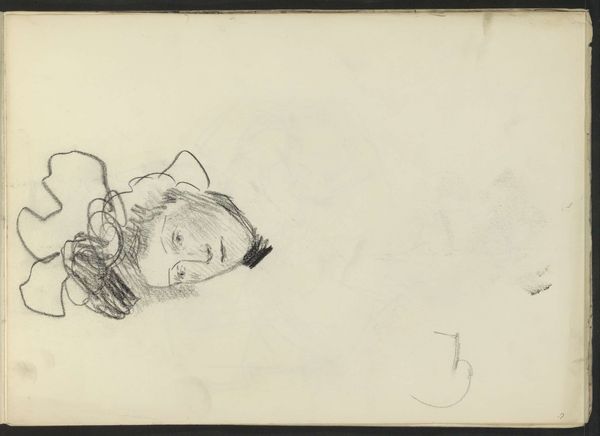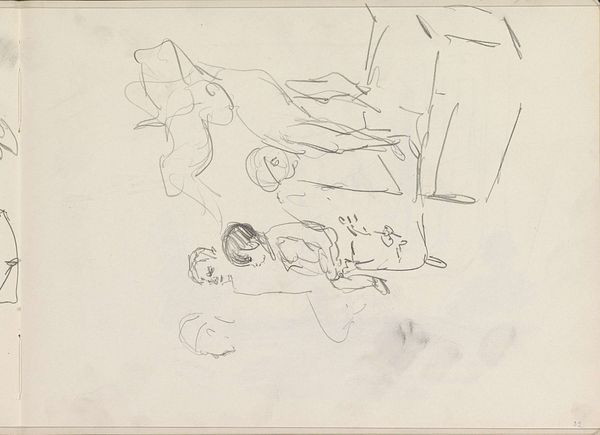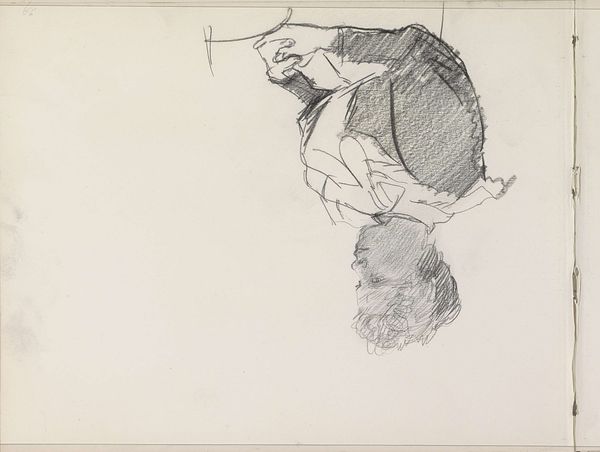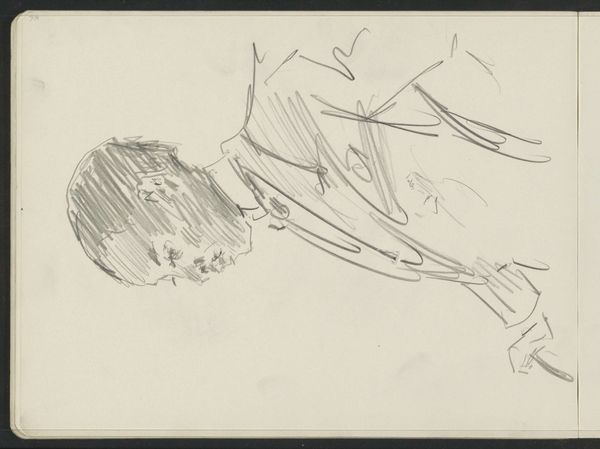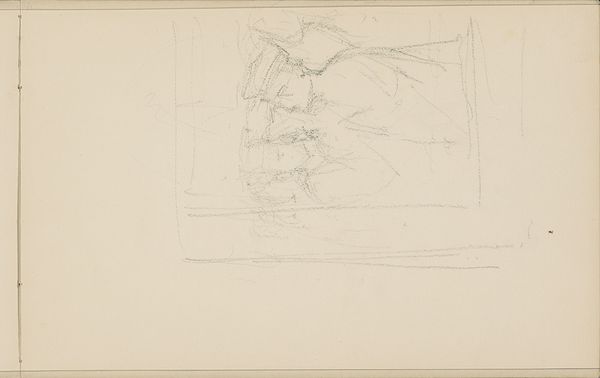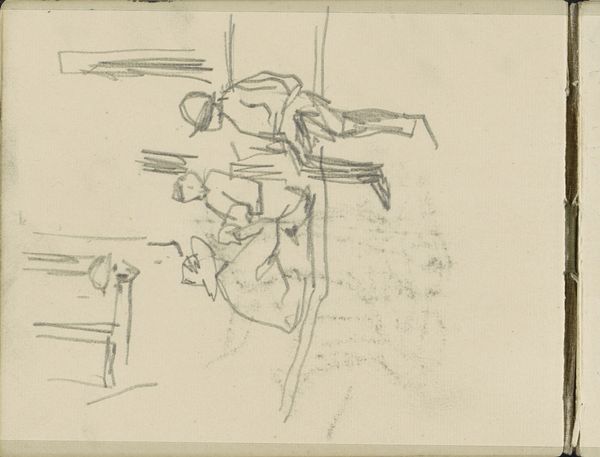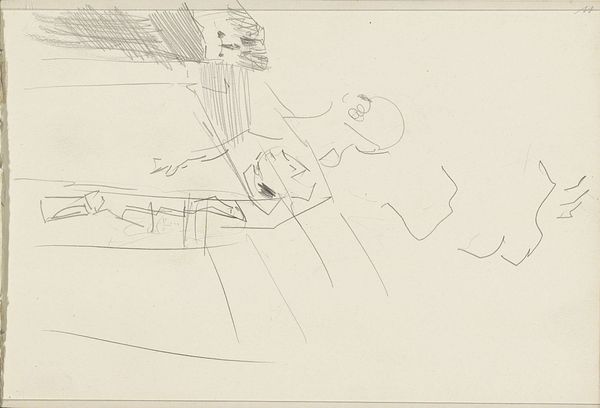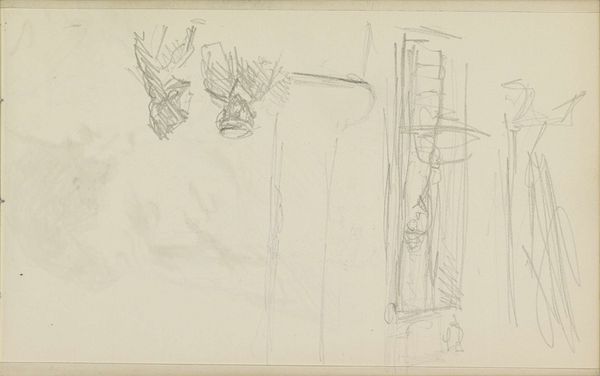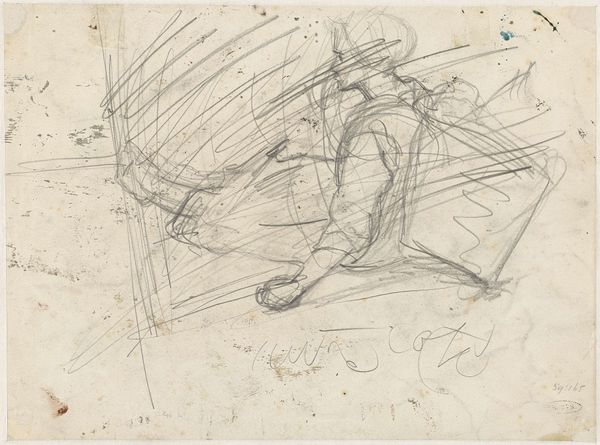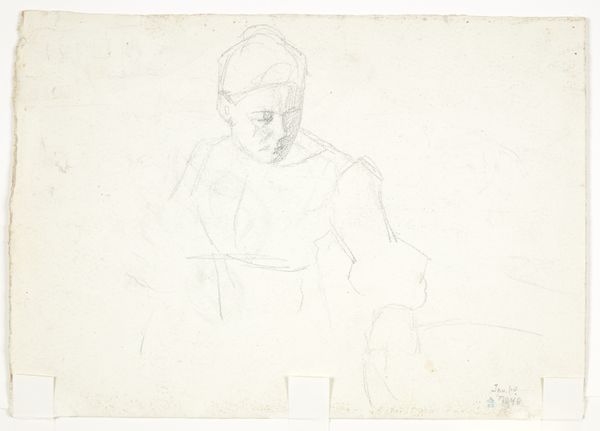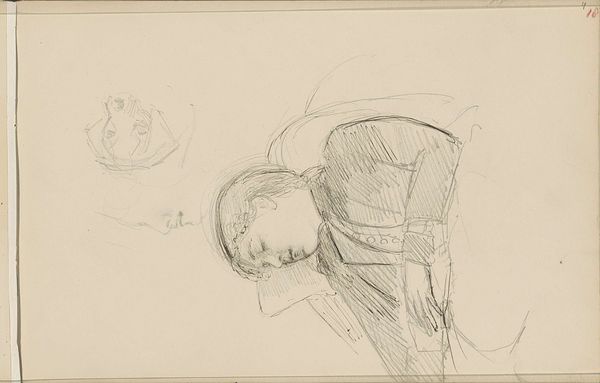
drawing, pencil
#
portrait
#
drawing
#
pencil sketch
#
landscape
#
figuration
#
pencil
#
realism
Dimensions: 240 mm (height) x 312 mm (width) (bladmaal)
Curator: Let's take a look at "Barn i vugge," or "Child in a Cradle," a pencil drawing by Peter Hansen, believed to have been created sometime between 1868 and 1928. What are your initial thoughts on this piece? Editor: It's wonderfully raw, isn’t it? Like a fleeting dream sketched onto paper. The child clinging to the bars… There’s something incredibly vulnerable yet determined in that grip. Feels so unfinished, like the artist caught a single breath of a moment. Curator: The immediacy you feel is crucial. Hansen, often associated with the Funen Painters, had a keen eye for capturing everyday life. Drawings like this served as studies, informing his larger, more polished paintings. The Realism movement emphasized this focus on unvarnished observation. Editor: So, this isn't the grand pronouncement but a humble, beautiful stepping stone? I see it. There's a delicate confidence here. I find that thrilling, as if Hansen let us glimpse the inner workings of his process, rather than offering up something perfectly refined. Curator: Precisely. What’s compelling is the accessibility this grants. He’s not presenting some idealized version of childhood, but rather an intimate perspective on infancy. Editor: It's so sparse, though. Just enough detail to convey this tiny human's effort. What's left unsaid amplifies the emotion, the yearning for… what? Comfort? Freedom? Is he trying to climb out of the cradle, or is he just holding tight for security? That ambiguous narrative draws me in, to think of the context that would change this tiny moment so drastically. Curator: Absolutely, the ambiguity fuels contemplation. Hansen’s choice of pencil— a readily accessible medium— speaks to a desire to democratize art-making, capturing the world as it is for broader reflection. The sketch aesthetic fits with the democratization, as well, and perhaps emphasizes its role in Hansen's broader practice. Editor: It’s almost confrontational, isn’t it? A demand for presence and participation in understanding infancy as more than this naive moment, but an era of constant observation and growth. Looking at it this way, I am more convinced that this child is determined to clamber free and experience the new world. Curator: It truly encapsulates Hansen’s capacity to elevate the mundane into something universally resonant, revealing beauty in its most fragile and vulnerable form. Editor: Yeah, it's a wisp of a drawing, but it whispers volumes. So raw.
Comments
No comments
Be the first to comment and join the conversation on the ultimate creative platform.
